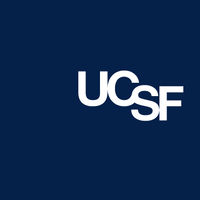预约演示
更新于:2025-05-07
TOP
更新于:2025-05-07
基本信息
别名 DNA topoisomerases |
简介- |
关联
964
项与 TOP 相关的药物作用机制 TOP1抑制剂 [+1] |
非在研适应症- |
最高研发阶段批准上市 |
首次获批国家/地区 日本 |
首次获批日期2024-12-27 |
作用机制 TOP1抑制剂 [+1] |
原研机构 |
在研适应症 |
非在研适应症- |
最高研发阶段批准上市 |
首次获批国家/地区 中国 |
首次获批日期2024-11-22 |
10,785
项与 TOP 相关的临床试验NCT06441006
Program for Rifampicin-Resistant Disease With Stratified Medicine for Tuberculosis (PRISM-TB)
PRISM-TB is an international, multicenter, open-label, randomized, controlled, pragmatic, stratified medicine, treatment shortening, noninferiority Phase 3 clinical trial for fluoroquinolone-susceptible multidrug-resistant/rifampin-resistant pulmonary tuberculosis (FQ-S MDR/RR-TB).
The trial objective is to evaluate whether stratified medicine treatment strategies for FQ-S MDR/RR-TB, defined by a pre-specified risk stratification algorithm, have noninferior efficacy to a one-size-fits-all control regimen (the local standard-of-care [SOC] regimen consistent with preferred regimen(s) in international guidelines), as measured by TB-related unfavorable outcomes at Week 73.
The trial objective is to evaluate whether stratified medicine treatment strategies for FQ-S MDR/RR-TB, defined by a pre-specified risk stratification algorithm, have noninferior efficacy to a one-size-fits-all control regimen (the local standard-of-care [SOC] regimen consistent with preferred regimen(s) in international guidelines), as measured by TB-related unfavorable outcomes at Week 73.
开始日期2026-10-01 |
申办/合作机构 |
NCT05403723
A Phase 1b Trial of Adaptive Stereotactic Body Radiotherapy in Combination with Durvalumab (MEDI4736), Platinum, and Etoposide in Extensive Stage Small Cell Lung Cancer
This is trial studying the safety of adaptive stereotactic body radiotherapy (SBRT) combined with durvalumab immunotherapy, platinum chemotherapy, and etoposide chemotherapy in platinum refractory extensive stage small cell lung cancer (SCLC).
开始日期2025-12-31 |
申办/合作机构 |
NCT06917911
Phase II Study of Cytarabine + Daunorubicin (7 + 3) + Gemtuzumab Ozogamicin vs. Cytarabine + Daunorubicin (7 + 3) + Venetoclax for the Treatment of Newly Diagnosed Core Binding Factor Acute Myeloid Leukemia (CBF-AML) in Younger Adults: A MyeloMATCH Substudy
This phase II MyeloMATCH treatment trial compares the effect of venetoclax to gemtuzumab ozogamicin, when given with cytarabine and daunorubicin ("7+3" regimen), for the treatment of patients with core binding factor acute myeloid leukemia (CBF-AML). Venetoclax is in a class of medications called B-cell lymphoma-2 (BCL-2) inhibitors. It may stop the growth of cancer cells by blocking Bcl-2, a protein needed for cancer cell survival. Gemtuzumab ozogamicin is a monoclonal antibody, called gemtuzumab, linked to an antitumor antibiotic drug, called ozogamicin. Gemtuzumab is a form of targeted therapy because it attaches to specific molecules (receptors) on the surface of cancer cells, known as CD33 receptors, and delivers ozogamicin to kill them. Chemotherapy drugs, such as cytarabine and daunorubicin work in different ways to stop the growth of cancer cells either by killing the cells, by stopping them from dividing, or by stopping them from spreading. Giving venetoclax with cytarabine and daunorubicin may have fewer side effects and be as effective or better than the combination with gemtuzumab ozogamicin in treating patients with core binding factor AML.
开始日期2025-11-20 |
申办/合作机构 |
100 项与 TOP 相关的临床结果
登录后查看更多信息
100 项与 TOP 相关的转化医学
登录后查看更多信息
0 项与 TOP 相关的专利(医药)
登录后查看更多信息
21,024
项与 TOP 相关的文献(医药)2025-12-31·Veterinary Quarterly
Integrative and conjugative elements associated with antimicrobial resistance in multidrug resistant
Pasteurella multocida
isolates from bovine respiratory disease (BRD)-affected animals in Spanish feedlots
Article
作者: Serna, Carlos ; Fernández-Garayzábal, José Francisco ; Vela, Ana Isabel ; Díez Guerrier, Alberto ; Alvarez, Julio ; García Muñoz, Ángel ; Hernández, Marta ; Torre-Fuentes, Laura ; Cid, Dolores ; Calderón Bernal, Johan Manuel
2025-12-31·Veterinary Quarterly
Prevalence and characterization of ciprofloxacin-resistant
Salmonella enterica
spp. isolated from food animals during 2010–2023 in South Korea
Article
作者: Heo, Ye-Eun ; Moon, Bo-Youn ; Choi, Ji-Hyun ; Kim, Min Young ; Kim, Ji-In ; Kang, Hee-Seung ; Hwang, Yu-Jeong ; Lim, Suk-Kyung ; Lee, Yeon-Hee ; Kim, Jae-Myung ; Ali, Md. Sekendar
2025-08-01·Bioorganic & Medicinal Chemistry Letters
Design and synthesis of β-carboline-benzofuran based hybrids as antibacterial agents against Staphylococcus aureus
Article
作者: Shankaraiah, Nagula ; Rallabandi, Naveen Chand ; Khan, Mursalim Ali ; Parida, Kishan Kumar ; Sowmya, Dastari ; Kalia, Nitin Pal
792
项与 TOP 相关的新闻(医药)2025-05-01
OBI-902 is the first ADC utilizing OBI’s proprietary GlycOBI® ADC enabling technology
TAIPEI, Taiwan I May 01, 2025 I
OBI Pharma, Inc. (“OBI”), a clinical stage oncology company(4174.TWO), today announced that the U.S. Food and Drug Administration (FDA) has cleared an investigational new drug (IND) application for OBI-902, to conduct a Phase 1/2 study. OBI plans to enroll patients with advanced solid tumors. This IND clearance represents a significant milestone for OBI-902, bringing forward a potentially best-in-class Trop-2 -targeted cancer therapy for patients with high unmet medical needs.
OBI’s Chief Executive Officer, Heidi Wang, Ph.D. noted, “The impending OBI-902-001 clinical trial intends to evaluate the safety, pharmacokinetics, and preliminary efficacy of OBI-902 in patients with advanced solid tumors. We are very excited to begin dosing patients in our Phase 1/2 clinical study of OBI-902 later this year.”
OBI-902 is a novel Trop-2 ADC utilizing OBI’s proprietary GlycOBI
®
ADC enabling technology. At the 2025 American Association for Cancer Research (AACR) meeting, OBI presented data demonstrating enhanced linker-payload stability, favorable pharmacokinetics with superior and durable antitumor activities of OBI-902 in numerous in-vitro and animal studies compared to other Trop-2 ADCs
1
,
2
. The Phase 1/2 clinical study is planned to begin enrolling patients in 2H 2025.
1
OBI-902, a novel TROP-2 targeted antibody-drug conjugate via GlycOBI
®
platform, has favorable pharmacokinetics and sustained antitumor activities in challenging solid tumors.
AACR Annual Meeting 2025 Abstracts online
https://www.abstractsonline.com/pp8/#!/20273/presentation/1103
2
Harnessing the GlycOBI® enabling technologies: next-generation site-specific glycan ADCs with versatile DAR to enhance therapeutic index.
AACR Annual Meeting 2025 Abstracts online
https://www.abstractsonline.com/pp8/#!/20273/presentation/3007
About OBI-902
OBI-902 is a Trop-2-targeted antibody-drug conjugate (ADC) that carries a potent topoisomerase I inhibitor payload to kill tumor cells and with a drug-antibody ratio (DAR) of 4. Trop-2 is highly expressed in a variety of solid tumors such as breast, ovarian, gastric, and many other cancer types, rendering it an ideal target for cancer therapy.
OBI-902 is a novel site-specific glycan-conjugated ADC using OBI’s proprietary GlycOBI
®
platform, which provides improved stability and enhanced hydrophilicity. OBI-902 demonstrated remarkable antitumor efficacy, improved pharmacokinetic characteristics, and a favorable safety profile in various animal models. IND of OBI-902 was submitted to the U.S. FDA on March 31, 2025, and the IND was cleared on April 30, 2025.
OBI has licensed Trop-2 targeting antibody from Biosion, Inc. (
www.biosion.com
) since December 2021, holding exclusive rights worldwide except in China. OBI holds worldwide commercial rights to OBI-902, to the exception of the rights pertaining to the antibody in China.
About GlycOBI
®
OBI has developed a unique glycan-based ADC technology (GlycOBI
®
), which is in a ‘Plug and Play’ format and compatible with any antibodies, linkers, and payloads in various DAR. Utilizing OBI’s proprietary enzymatic technology(EndoSymeOBI®) and linker technology(HYPrOBI™), GlycOBI
®
generates site-specific homogenous ADCs with an efficient and scalable process under GMP conditions. The conjugation process of GlycOBI
®
avoids disrupting the antibody structure and ensures the ADC has similar biophysical characteristics to the native antibody. Furthermore, OBI’s linker technology has improved conjugation efficiency of the payload, reduced aggregation propensity, which provides advantages on manufacturing ADC products. GlycOBI
®
has overcome the limitations of traditional ADCs and achieved better antitumor activity and stability in various in vivo animal studies.
About OBI Pharma
OBI is a clinical stage global oncology company that is headquartered in Taiwan and established in 2002. Its mission, together with its wholly owned subsidiary OBI Pharma USA, Inc., is to develop novel cancer therapeutic agents for patients with high unmet medical needs.
OBI’s primary focus is the development of novel ADCs, including the first-generation cysteine-based TROP-2 ADC, OBI-992. Using the company’s proprietary ADC enabling technology, GlycOBI
®
, powered by EndoSymeOBI
®
and HYPrOBI™; OBI has created its second generation novel ADC pipeline, including monospecific: OBI-902 (Trop-2), OBI-904 (Nectin-4), Trastuzumab-ADC (HER2), bi-specifics and dual payload ADCs. To broaden the applicability of the linker technology, HYPrOBI™, OBI further developed a next-generation ThiOBI
®
platform to enable irreversible cysteine-based conjugation. Additionally, OBI’s pipeline also includes the first-in-class AKR1C3-targeted small-molecule prodrug OBI-3424, which selectively releases a potent DNA-alkylating antitumor agent in the presence of the aldo-keto reductase 1C3 (AKR1C3) enzyme that is highly expressed in tumors. Additional information can be found at
www.obipharma.com
.
SOURCE:
OBI Pharma
临床申请抗体药物偶联物引进/卖出AACR会议
2025-05-01
·化学经纬
2025 年 AACR 年会上,NEW DRUGS ON THE HORIZON 系列报告特别披露了 12 种创新肿瘤药物,涵盖小分子和大分子。与往年一样,这系列特别会议让参会者首次了解到正在进入或在临床中取得进展的新型癌症治疗方法的分子结构和初步临床数据。这12种化合物中——包括几种高选择性抑制剂、1种分子胶降解剂、1 种双功能降解剂、1 种放射性药物、3 种双抗、1 种 RDC、和 1 种双抗ADC,其中有3款抑制剂均靶向KRAS。ND01 - AMG 410: GTP(on)/GDP(off) 双重活性的泛 KRAS 抑制剂利用对 KRAS G12Ci 的深入了解,基于结构设计了非共价“泛 KRAS”抑制剂 AMG 410,该抑制剂通过与已获批准的 KRAS G12C 抑制剂相同的变构口袋与 KRAS 突变体(G12D、G12V、G13D;IC50值 = 1-4 nM)结合。AMG410在KRAS突变细胞中显示出强大的抗增殖活性(中位 IC50= 12 nM)。重要的是,AMG 410对 KRAS 具有高度特异性,对 HRAS 和 NRAS 的选择性均超过 100 倍,AMG 410与泛 RAS 抑制剂的区别在于它能够避免在非KRAS转化细胞中产生抗增殖作用(中位 IC50>5 µM)。与仅有“ON”状态的抑制剂相比,AMG 410是双重 GTP(ON)和 GDP(OFF)状态抑制剂(KD(GDP)= 1 nM;KD(GTP)= 22 nM),能够以循环状态非依赖的方式阻断 KRAS 信号传导,同时还允许AMG 410阻断野生型KRAS 扩增肿瘤细胞的增殖。AMG 410 展现出强大的临床前疗效,在整个给药周期内显著降低磷酸化 ERK 水平,并在多种KRAS突变的结直肠癌、胰腺癌和肺癌细胞株异种移植瘤 (CDX) 和人源性异种移植瘤 (PDX) 模型中实现肿瘤停滞或消退。AMG 410 还表现出与其他靶向疗法或免疫疗法联合使用时增强的体内疗效和良好的临床前耐受性,凸显了 HRAS 和 NRAS 抑制剂在联合治疗中展现出更高疗效和解决临床耐药问题的潜力。基于良好的非临床安全性和有效性, AMG 410 将进行针对一系列实体瘤适应症的人体研究。ND02 - GDC-2992:一种异双功能雄激素受体 (AR) 拮抗剂和降解剂,用于治疗 AR 野生型和突变型前列腺癌前列腺癌是男性中第二大常见癌症,每 8 名男性中就有 1 名被诊断出患有前列腺癌。雄激素受体(AR)是一种激素激活的转录因子,可促进正常前列腺细胞的生长和存活,而 AR 信号传导是前列腺癌细胞增殖的关键驱动因素。抑制 AR 信号传导是目前前列腺癌治疗的主要手段,然而,患者通常会通过依赖 AR 信号传导的机制对这些疗法产生耐药性。GDC-2992(又名 RO7656594)是一种强效、可口服的异双功能分子,它通过连接 AR 和 E3 泛素连接酶 cereblon (CRBN)来抑制 AR 信号传导,从而导致 AR 泛素化并随后降解。GDC-2992 可在野生型 AR 和携带与标准治疗 AR 信号抑制剂(ARSI)耐药性相关的突变的 AR 蛋白的背景下抑制 AR 信号传导。与 ARSIs 不同,GDC-2992 未显示出对任何评估的 AR 变体具有激动作用的证据。体外实验中,GDC-2992 与 CRBN 配体泊马度胺联合治疗可阻止 GDC-2992 介导的 AR 降解,这支持了 CRBN 在 GDC-2992 介导的 AR 降解中的作用。然而,重要的是,即使降解减弱,GDC-2992 的抗增殖潜力依然存在,这表明 GDC-2992 的机制除了降解外,还包括竞争性 AR 拮抗作用。在体内实验中,GDC-2992 以剂量反应的方式降低循环 PSA 水平并抑制前列腺肿瘤生长。体外和体内临床前数据表明,GDC-2992 比标准治疗的 ARSIs 具有显著的进步。 一项正在进行的 I 期剂量递增和扩展研究将评估 GDC-2992 在既往接受过 AR 靶向治疗的晚期或转移性前列腺癌患者中的安全性、耐受性、药代动力学和初步抗肿瘤活性[NCT05800665]。ND03 - ABBV-969:用于治疗转移性去势抵抗性前列腺癌的首创双靶点 PSMA-STEAP1 药物偶联物前列腺癌是美国男性癌症死亡的第二大原因。目前尚无针对晚期前列腺癌的治愈疗法,因此迫切需要新型疗法。ABBV-969 旨在通过将细胞毒素递送至高表达前列腺肿瘤抗原 STEAP1和 PSMA的肿瘤细胞来满足这一关键需求。STEAP1 在正常组织中表达极低,但在超过 85% 的前列腺肿瘤中高度富集,并促进其增殖和侵袭。作为前列腺谱系标志物,PSMA 在肿瘤中的表达比健康前列腺组织高出 100 倍,并且与肿瘤分期、侵袭性和复发相关。前列腺癌中的高表达和高患病率表明这两种抗原是抗体药物偶联物 (ADC) 的理想靶点。由于肿瘤内及肿瘤间异质性表达可能限制疗效,我们采用双可变结构域免疫球蛋白 (DVD-Ig) 形式设计了一种可同时结合 STEAP1 和 PSMA 的双特异性抗体。该形式可实现两个靶点的二价结合,从而可能提高肿瘤覆盖率和治疗持久性。ABBV-969 是 DVD-Ig 与专有拓扑异构酶 1 (Top1) 抑制剂连接体药物的结合物,该药物与两种处于临床开发阶段的药物 ABBV-400(靶向 c-Met)和 ABBV-706(靶向 SEZ6)中使用的连接体药物相同。ABBV-969 与 STEAP1 和 PSMA 具有高亲和力结合,并且对表达其中一种或两种抗原的细胞具有细胞毒性。 ABBV-969 表现出良好的类药物特性、药代动力学和对去势抵抗性前列腺肿瘤患者异种移植瘤的疗效,并且比靶向 STEAP1 或 PSMA 的标准 ADC 具有更广泛的活性。此外,ABBV-969 在食蟹猴中耐受性良好,且具有与其他 Top1 抑制剂 ADC 常见的骨髓和胃肠道毒性。ABBV-969 目前正处于 1 期临床研究 (NCT06318273) 的剂量递增阶段。ND04 - ABP-102/CT-P72:新型四价 HER2 x CD3 T 细胞接合剂HER2 在乳腺癌、胃癌和其他癌症中过表达,在正常组织中表达有限。有效的 HER2 靶向治疗包括单克隆抗体、酪氨酸激酶抑制剂和抗体-药物偶联物。然而,耐药性仍然是一个问题。双特异性抗体 T 细胞结合剂 (TCE) 作为实体瘤的新型治疗方法具有尚未实现的潜力,过去在血液系统恶性肿瘤中取得了显著成功,并且最近 FDA 批准了tarlatamab 用于实体瘤治疗。先前开发 HER2 TCE 的尝试遇到了毒性问题。为了开发更安全的药物,这里设计了 ABP-102/CT-P72,这是一种新一代 HER2 x CD3 四价双特异性 (TetraBi) IgG1-[L]-scFv 形式的抗体,通过降低每个二价 HER2 结合臂的亲和力来降低对 HER2 低表达细胞的活性,从而选择性地对抗 HER2 过表达的肿瘤细胞。 ABP-102/CT-P72 经过精心设计,可降低 HER2 表达较低的正常组织中发生靶向、脱肿瘤毒性的可能性,其 IgG-[L]-scFv 形式具有功能性单价 CD3 结合,可促进 T 细胞参与。已经进行了 ABP-102 的体外活性以及体内疗效和安全性的临床前研究。 体外实验中 ,ABP-102/CT-P72 介导的 T 细胞活化、细胞毒性和细胞因子释放以 HER2 表达水平依赖的方式发生。 体内实验使用植入表达人类 HER2 细胞的异种移植肿瘤模型,然后应用人类 PBMC 进行。ABP-102/CT-P72 在 HER2 过表达模型(NCI-N87 和 BT-474)中表现出强效的肿瘤生长抑制作用,并在 HER2 低模型(HT55)中降低肿瘤生长抑制作用,这与预期一致。 在 HER2 过表达模型中,ABP-102/CT-P72 的肿瘤生长抑制率比 Runimotamab 的生物类似药(HER2 x CD3 TCE)高出两倍。ABP-102/CT-P72 在食蟹猴中也表现出良好的耐受性。ABP-102/CT-P72 的临床前研究证明了其强大的疗效和安全性,预计这将在即将开展的临床试验中扩大治疗窗口。 Abpro 和 CELLTRION, INC. 正在联合开发 ABP-102。ND05 - BMS-986449,一种高效、高选择性的IKZF2和 IKZF4 分子胶降解剂肿瘤微环境中调节性 T 细胞 (Treg) 的丰度与免疫疗法(例如纳武单抗)的疗效不佳相关。转录因子 IKZF2 和 IKZF4 在 Treg 细胞中大量表达,并参与了与该 T 细胞亚群相关的免疫抑制表型。IKZF2 和 IKZF4 的降解可能会使 Treg 细胞重新极化,使其趋向于抑制性较低、炎症性更强的表型,从而增强抗肿瘤效应 T 细胞应答。本报告介绍了 BMS-986449 的发现和表征,BMS-986449 是一种 IKZF2 和 IKZF4 的 C ereblon E 3 连接酶调节药物 (CELMoD™) 分子胶降解剂。 BMS-986449 是一种强效且口服生物可利用的 IKZF2/4 降解剂,经全蛋白组学评估,其对调节性 T 细胞中 IKZF1/3 水平的影响极小。BMS-986449 可在体外影响 Treg 细胞重编程,使其具有更接近效应细胞的表型,从而在同基因肿瘤模型中展现出良好的体内疗效。在食蟹猴中,口服 BMS-986449(0.3 mg/kg,每日一次)耐受性良好,并在 24 小时内维持循环 Treg 细胞中 Helios ≥80% 的降解率。鉴于这些临床前研究的积极成果和可接受的安全性,BMS-986449 已进入针对晚期实体瘤患者的 I/II 期临床试验。ND06 - RMC-5127,一种可口服、RAS (ON) G12V 选择性、非共价、三复合物抑制剂RAS G12V 突变是胰腺癌、结直肠癌和非小细胞肺癌中最常见的致癌驱动因素之一。在肿瘤细胞内,RAS G12V 主要处于活性 GTP 结合状态(“RAS(ON)”),导致下游致癌信号过度。RAS G12V 的固有 GTP 水解速率比 KRAS G12C 低约 12 倍,这使得细胞内 RAS G12V 库偏向于ON 状态,这凸显了靶向 RAS G12V(ON) 以最大程度抑制该致癌驱动因素的重要性。此外,迄今为止,使用传统的小分子实现对 RAS G12V 而非野生型 RAS 的选择性极具挑战性,因为 Val-12 残基既不适合共价抑制,也不适合形成极性非共价相互作用。RMC-5127 是一种强效、口服生物可利用、RAS(ON) G12V 选择性、非共价三复合物抑制剂。在 KRAS G12V 突变型癌细胞中,RMC-5127 与 KRAS G12V(ON) 和环丝氨酸蛋白酶 A (CypA) 形成三重复合物,通过空间位阻和 KRAS G12V(ON) 信号传导的消退,几乎立即破坏 RAS 效应子结合。RMC-5127 在体外抑制了多种 KRAS G12V 依赖型人癌细胞系中的 ERK 磷酸化和细胞生长,并且在小鼠 KRAS G12V 突变型癌症皮下异种移植模型中,单剂量 RMC-5127 可在体内诱导剂量依赖性、深度且持久的 RAS 通路激活抑制。在一组携带 KRAS G12V 的临床前 PDAC 和 NSCLC 模型中,RMC-5127 单药治疗在大多数模型中诱导了肿瘤消退,并且耐受性良好。 此外,在幼鼠的整个脑中观察到 RMC-5127 的剂量依赖性暴露,表明该化合物具有脑渗透性,并且 RMC-5127 在相关颅内 KRAS G12V 突变肿瘤异种移植模型中表现出显著的抗肿瘤活性,并在耐受性良好的剂量下观察到消退。ND07 - FXX489,一种特异性 FAP 靶向的放射性配体疗法FAP(成纤维细胞活化蛋白)在癌症相关成纤维细胞 (CAFs) 上表达,由于其在多种癌症中的潜力,成为放射配体疗法 (RLT) 中极具吸引力的靶点。β 射线的穿透特性据推测会引发 CAFs 与肿瘤细胞之间的“交叉火力效应”,从而导致 DNA 损伤和肿瘤细胞死亡。已知的 FAP 靶向配体在临床中表现出优异的肿瘤摄取选择性,但其肿瘤滞留时间较短,限制了其作为治疗手段的应用。本文描述了 FXX489(FAP 靶向配体),它可改善肿瘤滞留时间。FXX489 在相关动物模型( 例如 PDAC、NSCLC)中展现出 BiC 抗肿瘤功效的潜力,这些模型中的 FAP 表达于 CAFs,因此依赖于交叉火力机制。利用 mRNA 展示平台确定了多个起始点,并与 FAP 共结晶并评估其体内生物分布。选择肿瘤/肾脏比例最佳的系列进行进一步优化。优化基于共晶结构,重点在于最大限度地提高化合物的亲和力和蛋白水解稳定性。FXX489 与人和小鼠 FAP 的结合亲和力小于 10 pM;与其他蛋白酶(例如 DPP4)相比,表现出极佳的选择性;在血液和血浆中稳定。FXX489目前正在对胰腺导管腺癌 (PDAC)、非小细胞肺癌 (NSCLC)、乳腺癌和结直肠癌 (CRC) 患者进行 I 期临床评估 (NCT06562192)。ND08 - FAP-LTBR (RO7567132):双特异性基质免疫调节激动剂RO7567132 是一种新型双特异性抗体,可与淋巴毒素β受体(LTBR)双价结合,并与成纤维细胞活化蛋白(FAP)单价结合。LTBR 是肿瘤坏死因子受体超家族的成员,在包括基质细胞在内的多种细胞中表达。LTBR 与其配体结合后被激活,可上调参与吸引免疫细胞以及次级淋巴器官和高内皮微静脉(HEV)发育和维持的基因。FAP 在各种实体瘤中普遍存在,使其成为旨在在肿瘤基质内蓄积的药物的理想靶点。 RO7567132 通过靶向 FAP 将 LTBR 的激活特异性地限制在肿瘤微环境 (TME) 中,旨在调节肿瘤基质以诱导 HEV 分化,通过上调粘附分子和趋化因子来增加免疫细胞浸润,并诱导肿瘤部位特异性形成三级淋巴结构 (TLS),同时避免广泛的 LTBR 激活并最大程度地降低毒性。临床证据表明,在多种肿瘤适应症中,免疫浸润增加、TLS 的存在或 HEV 的存在与更好的预后和对癌症免疫疗法的更好反应相关。RO7567132 诱导内皮细胞表面粘附分子表达呈剂量依赖性和 FAP 依赖性增加,并增加体外诱导免疫细胞趋化因子的分泌。在临床前小鼠模型中,RO7567132 的鼠源替代物诱导肿瘤血管激活、分化为 HEV,并上调炎症和免疫通路,导致 T 细胞和 B 细胞向肿瘤的浸润增加,并升高血清 CXCL13 水平。在乳腺癌模型中,使用 RO7567132 的鼠源替代物治疗可抑制肿瘤生长,并且在乳腺癌和纤维肉瘤模型中与阿特珠单抗的鼠源替代物联合使用时均显示出更高的疗效。此外,在缓慢生长的原位小鼠结直肠癌模型中,使用 RO7567132 的鼠源替代物治疗可增加肿瘤中的免疫细胞(T 细胞和 B 细胞)和 HEV 的含量,并诱导类似于 TLS 的免疫细胞微环境的形成。RO7567132 在为期 2 周的非 GLP 最大耐受剂量/剂量范围探索 (MTD/DRF) 研究和为期 4 周的 GLP 毒理学研究中均表现出良好的耐受性,在食蟹猴中剂量高达 10 mg/kg,且未发现相关不良反应。RO7567132 目前正在进行一项开放标签、多中心、剂量递增、随机、1 期研究 (NCT06537310),以评估 RO7567132 作为单一药物以及与阿特珠单抗联合用于治疗晚期和/或转移性实体瘤患者的安全性、药代动力学、药效学和抗肿瘤活性。ND09 - BAY 3547926:针对肝细胞癌的新型靶向放射性核素治疗ND10 - GSK4418959 (IDE275): 一种新型、可逆的 WRN 解旋酶抑制剂 大规模全基因组水平的 CRISPR 筛选发现 WRN 解旋酶是一种有希望的 MSI-H 肿瘤合成致死靶点,且与肿瘤类型无关。这里描述了新型临床 WRN 解旋酶抑制剂 GSK4418959 (IDE275) 的发现,该抑制剂在体内和体外均重现了 WRN 基因抑制的 MSI-H 合成致死效应。GSK4418959 (IDE275) 与 WRN 解旋酶结构域中一个独特的变构位点结合,与 ATP 结合竞争并诱导一种与先前报道的 WRN 抑制剂不同的抑制构象。它选择性抑制 WRN 的 ATPase 和 DNA 解旋活性,但不抑制其他 RecQ 解旋酶家族成员,包括 BLM 解旋酶。GSK4418959 (IDE275) 在细胞中直接与 WRN 结合,以浓度依赖性方式选择性地在 MSI-H 癌细胞中诱导 DNA 损伤。 GSK4418959 (IDE275) 在多种肿瘤类型的 MSI-H 细胞系和患者来源的类器官中表现出强大的抗增殖作用,但在 MSS 模型中没有可测量的影响。 体内实验中 ,GSK4418959 (IDE275) 在几种携带不同致癌驱动基因和抑癌基因突变的 MSI-H CDX 和 PDX 模型中导致肿瘤消退并诱导 DDR 标志物,但不影响 MSS 模型。其中一个模型是来自一名患者的 MSI-H CRC PDX,该患者之前已接受过包括免疫检查点抑制剂 Nivolumab 在内的三种疗法治疗但均失败。由于其独特的结合模式,GSK4418959 (IDE275) 也在对其他已报道的 WRN 抑制剂治疗产生耐药性的 MSI-H CDX CRC 肿瘤模型中诱导了肿瘤消退。 这些研究结果证明了 GSK4418959 (IDE275) 对 MSI-H 癌症模型具有强效且选择性的临床前活性,表明其有望成为 MSI-H 癌症患者(包括现有疗法失败的患者)的一种有前景的临床治疗方案。ND11 - AZD0022:一种强效、可口服 KRASG12D 选择性抑制剂尽管近年来 RAS 靶向治疗取得了重大进展,但 KRAS G12D 癌症仍然是一项未满足的医疗需求。AZD0022 是一种强效、口服生物可利用高的 KRAS G12D 选择性可逆抑制剂,有望为 KRAS G12D 突变癌症患者带来治疗益处。 AZD0022 通过表面等离子体共振技术对活性型 KRAS G12D 蛋白 (KRAS G12D -GTP) 和非活性型 KRAS G12D 蛋白 (KRAS G12D -GDP) 均表现出高亲和力,且对野生型 KRAS 具有较高的选择性。AZD0022 在体内和体外实验中,对 KRAS G12D 结直肠癌 (CRC)、胰腺癌 (PDAC) 和非小细胞肺癌 (NSCLC) 模型中的生物标志物均表现出强效且浓度依赖性的抑制作用,并在这些适应症中抑制 KRAS G12D 肿瘤细胞的增殖和活力。AZD0022 对小鼠、大鼠和犬口服给药后,表现出显著的口服暴露量和较长的终末消除期半衰期。 AZD0022 每日口服治疗在 CRC、PDAC 和非小细胞肺癌 (NSCLC) CDX(细胞系来源异种移植)和 PDX(患者来源异种移植)模型中,结果显示 AZD0022 对 KRAS G12D 突变肿瘤类型均具有广泛的抗肿瘤活性。西妥昔单抗联合治疗进一步改善了 KRAS G12D CRC 和 PDAC 模型对 AZD0022 的疗效,两种肿瘤均观察到持续消退。AZD0022 目前正在 ALAFOSS-01(NCT06599502)研究中进行研究,这是一项针对 KRAS G12D 突变实体瘤患者的首次人体、开放标签、多中心、1/2a 期 AZD0022 研究。ND12 - M0324,一种新型 MUC-1 条件性 CD40 激动剂过去几十年来,抗 CD40 激动剂抗体已在临床试验中得到探索;然而,迄今为止,尚无任何一种获得批准。全身激活 CD40 可能导致肝毒性、输液相关反应、血小板减少症和细胞因子释放综合征等不良反应,从而限制了这些药物的治疗窗口。将 CD40 激活特异性靶向肿瘤微环境可以增强抗肿瘤活性,同时最大限度地降低全身毒性。MUC-1 是一种在各种癌症中普遍过表达的糖蛋白,在肿瘤进展和免疫逃逸中发挥关键作用。M0324 是一种新型 MUC-1 条件性 CD40 激动剂,由抗 MUC-1 IgG 和两个相同的骆驼重链可变结构域(VHH)结合 CD40 组成,旨在在 MUC-1 过表达的肿瘤细胞存在的情况下条件性激活免疫细胞。临床前体外研究表明,M0324 与 MUC-1 阳性肿瘤细胞相互作用时显著增强树突状细胞 (DC) 的活化,而当 MUC-1 表达细胞缺失时则无活性。与目前正在临床评估的抗 CD40 抗体相比,M0324 在树突状细胞肿瘤细胞共培养中表现出更优异的激活 IL-12p40 表达的能力。M0324 激活免疫细胞 CD40 的能力依赖于肿瘤细胞的 MUC-1 表达。单剂量、单药 M0324m 治疗在两种不同的免疫功能正常的小鼠肿瘤模型中均表现出强大的肿瘤清除效果(原位 Panc02-MUC-1 模型中 93% 的小鼠无瘤,MC38-MUC-1 模型中 100% 的小鼠无瘤)。CD40 的条件性激活仅在 MUC-1 存在的情况下发生,从而最大限度地减少了肿瘤外效应并提高了治疗指数。与 M0324m 相反,抗鼠 CD40 基准抗体导致小鼠体重减轻,并且边缘耐受剂量的抗鼠 CD40 无法控制肿瘤生长。综上所述,M0324 的条件性作用模式利用肿瘤中 MUC-1 的高表达来诱导靶向抗肿瘤免疫,有望克服传统 CD40 激动剂的安全局限性。临床前数据支持对 M0324 在 MUC-1 过表达肿瘤患者中进行临床研究。
免疫疗法AACR会议抗体药物偶联物临床结果
2025-04-30
MARSEILLE, France I April 29, 2025 I
Innate Pharma SA (Euronext Paris: IPH; Nasdaq: IPHA) (“
Innate
” or the “
Company
”) today shared new preclinical data for IPH4502, its novel and differentiated topoisomerase I inhibitor Antibody Drug Conjugate (ADC) targeting Nectin-4. The data were presented at the American Association for Cancer Research (AACR) Annual Meeting 2025.
Nectin-4 targeting is validated by enfortumab vedotin (EV), an ADC with a monomethyl auristatin E (MMAE) payload, approved for urothelial carcinoma (UC), an indication with high Nectin-4 expression. However, EV discontinuation due to toxicity, disease relapse, or treatment ineligibility, along with its limited efficacy in tumors with lower Nectin-4 expression, underscores the need for a differentiated Nectin-4 ADC with improved therapeutic window and improved mechanisms of action.
IPH4502 demonstrated anti-tumor activity in EV-resistant patient-derived xenograft (PDX) model with upregulation of multi-drug resistance protein 1 (MDR1), supporting its potential to overcome resistance mechanisms in EV-refractory disease.
Beyond UC, IPH4502 also exhibited anti-tumor activity in preclinical models of triple-negative breast cancer, head and neck squamous cell carcinoma, and esophageal cancer, suggesting broader potential clinical applicability.
In addition, in preclinical tumor models with low Nectin-4 expression, IPH4502 showed superior anti-tumor activity compared to a clinical-stage Nectin-4-exatecan ADC supported by higher internalization, cytotoxicity, and bystander killing effect.
“
We are highly encouraged by these preclinical data, which suggest that IPH4502 has the potential to translate into improved clinical benefit in indications with unmet medical need. These findings also reinforce the rationale for our ongoing Phase 1 trial. We look forward to sharing initial clinical data in 2026 as the program advances,
” said
Sonia Quaratino, Chief Medical Officer of Innate Pharma
.
IPH4502 is currently investigated in a Phase 1 trial in advanced solid tumors known to express Nectin-4 (
NCT06781983
).
The poster is available on
Innate Pharma’s website
.
About IPH4502
IPH4502 is a differentiated topoisomerase I inhibitor Antibody Drug Conjugate (ADC) conjugated to exatecan targeting Nectin-4, a cell adhesion molecule that is overexpressed in several types of solid tumors, such as urothelial carcinoma, breast cancer, non-small cell lung cancer or gastro-intestinal tract cancer.
IPH4502 is currently investigated in a Phase 1 trial in advanced solid tumors. The Phase 1 trial will assess the safety, tolerability, and preliminary efficacy of IPH4502 in different solid tumors known to express Nectin-4, including but not limited to urothelial carcinoma, non-small cell lung, breast, ovarian, gastric, esophageal, and colorectal cancers. The study plans to enroll approximately 105 patients.
In preclinical models, IPH4502 demonstrates strong bystander killing effect, and efficient internalization, enabling a potent anti-tumor activity in models with various Nectin-4 expression levels. Additionally, IPH4502 shows efficacy in models resistant to MMAE-ADC. These results support its potential for development beyond UC and in cancer patients treated with MMAE-based ADCs.
About Innate Pharma
Innate Pharma S.A. is a global, clinical-stage biotechnology company developing immunotherapies for cancer patients. Its innovative approach aims to harness the innate immune system through three therapeutic approaches: multi-specific NK Cell Engagers via its ANKET
®
(Antibody-based NK cell Engager Therapeutics) proprietary platform and Antibody Drug Conjugates (ADC) and monoclonal antibodies (mAbs).
Innate’s portfolio includes several ANKET
®
drug candidates to address multiple tumor types as well as IPH4502, a differentiated ADC in development in solid tumors. In addition, anti-KIR3DL2 mAb lacutamab is developed in advanced form of cutaneous T cell lymphomas and peripheral T cell lymphomas, and anti-NKG2A mAb monalizumab is developed with AstraZeneca in non-small cell lung cancer.
Innate Pharma is a trusted partner to biopharmaceutical companies such as Sanofi and AstraZeneca, as well as leading research institutions, to accelerate innovation, research and development for the benefit of patients.
Headquartered in Marseille, France with a US office in Rockville, MD, Innate Pharma is listed on Euronext Paris and Nasdaq in the US.
Learn more about Innate Pharma at
www.innate-pharma.com
. Follow us on
LinkedIn
and
X
.
SOURCE:
Innate Pharma
免疫疗法临床1期AACR会议上市批准
分析
对领域进行一次全面的分析。
登录
或

Eureka LS:
全新生物医药AI Agent 覆盖科研全链路,让突破性发现快人一步
立即开始免费试用!
智慧芽新药情报库是智慧芽专为生命科学人士构建的基于AI的创新药情报平台,助您全方位提升您的研发与决策效率。
立即开始数据试用!
智慧芽新药库数据也通过智慧芽数据服务平台,以API或者数据包形式对外开放,助您更加充分利用智慧芽新药情报信息。
生物序列数据库
生物药研发创新
免费使用
化学结构数据库
小分子化药研发创新
免费使用





